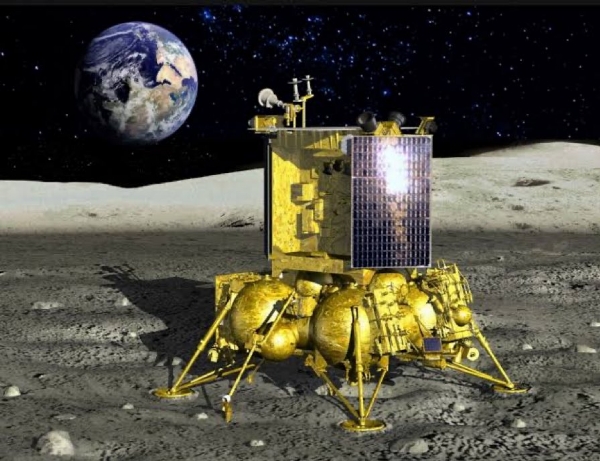Moscow declares its moon mission Luna-25 failed; Know technical reasons of its FAILURE?
21 Aug 2023 11:17:48
The Russia's ambitious lunar mission, the Luna-25, which was aiming a soft landing on the lunar south pole, unfortunatley crashed onto the surface of the moon after spacecraft spun out of control. The crash highlighted the challenges of space exploration and the unpredictable nature of such missions.

Roskosmos Statement
The Luna-25 spacecraft encountered a catastrophic failure shortly after a critical maneuver as it was being positioned into its pre-landing orbit on Saturday. In a statement released by Roskosmos, the agency revealed that contact with the spacecraft had been lost due to an unforeseen issue during this critical phase of the mission. "The apparatus moved into an unpredictable orbit and ceased to exist as a result of a collision with the surface of the Moon," Roskosmos stated in their official announcement, conveying the tragic outcome of the Luna-25 mission.
BREAKING: Russia’s #Luna25 moon lander has crashed on the lunar surface. Official statement confirms. A sad day for science & the Roscosmos team, very much like it was for ISRO/Chandrayaan-2 in 2019. Now all eyes on India’s Vikram, scheduled to land on Aug 23 @ 5.45pm. pic.twitter.com/RdMHfsYd7x
— Shiv Aroor (@ShivAroor) August 20, 2023
In an official statement on Telegram, Roskosmos said, "On August 19, in accordance with the flight program of the Luna-25 spacecraft, it was planned to issue an impulse to form its pre-landing elliptical orbit.At about 14:57 Moscow time, communication with the Luna-25 spacecraft was interrupted. The measures taken on August 19 and 20 to search for the device and get in contact with it did not produce any results."
What Went Wrong With Luna 25?
The mission seemed to be going well when Luna 25 entered lunar orbit successfully. The plan was to adjust its orbit and make a soft landing on the Moon’s surface. But during this critical adjustment phase, something unexpected occurred.
An “emergency situation” arose, and the spacecraft couldn’t perform the required maneuver. As a result, Luna 25 couldn’t control its path and ended up crashing into the Moon.
Race to conquer Moon's South!
— BhikuMhatre (@MumbaichaDon) August 20, 2023
🔸 #Russian #Luna25-25 spacecraft has crashed into the moon.
Meantime...
🔸Chandrayaan-3 Mission: Final deboosting operation has successfully reduced LM orbit to 25 km x 134 km. Set to land on the moon on 23 August around 18:04 Hrs IST.
Thank…
Roscosmos’ Efforts
Russia’s space agency, Roscosmos, immediately took action to find and reestablish communication with the spacecraft. However, despite their efforts, they were unable to get in touch with Luna 25.
Roscosmos conducted a thorough investigation to understand the cause of the crash, but the exact reasons are not yet clear.
"A specially formed interdepartmental commission will deal with the issues of clarifying the reasons for the loss of the Moon," it added. The space agency said an investigation would be launched into the causes of the crash. However, it didn’t give any indication of the exact nature of technical problems.
About Mission
The Luna-25 mission was an integral part of Russia's efforts to revitalize its lunar exploration program. The spacecraft was designed to land on the Moon's south pole, a region of particular interest to scientists due to its potential for harboring water ice—a precious resource that could be pivotal for future human missions to the Moon and beyond.
The failed mission was meant to serve as a precursor for more advanced lunar endeavors, paving the way for the upcoming Luna-26 and Luna-27 missions, which were expected to carry out more intricate tasks including the collection and return of lunar soil samples.
Roskosmos had originally outlined the Luna-25 mission as a significant milestone in Russia's space exploration narrative, a long-awaited return to lunar exploration after nearly five decades since the last successful Soviet lunar mission. The incident has not only dashed these ambitions but has also raised questions about the technical challenges and unforeseen obstacles that space agencies face when undertaking such complex endeavors.